The world of coffee is rich with different brewing techniques, each offering a unique experience to the palate. Among the plethora of options, cold brew and hot brew stand out for their distinct methods and resulting flavors. This article delves into the nuances of cold brew versus hot brew coffee, exploring the brewing processes, taste profiles, health considerations, and the often-confusing differences between cold press and cold brew. Whether you’re a coffee aficionado or a casual drinker, understanding these differences can help you make an informed decision on which brew suits your taste and lifestyle best.
Key Takeaways
- Cold brew is crafted by steeping coffee grounds in cold water for 12-24 hours, resulting in a sweeter and less acidic flavor compared to hot brew.
- The taste of cold brew is often described as smoother with chocolate and nutty notes, whereas hot brew tends to retain more acidity and bitterness.
- Health-wise, cold brew is considered gentler on the stomach due to its lower acidity and may have a slightly different antioxidant profile.
- Cold press differs from cold brew in that it involves a coarse grind and can be customized by changing grind size, while cold brew allows for variations in brewing time and coffee-to-water ratios.
- Choosing between cold brew and hot brew often comes down to personal preference, with considerations for convenience, digestibility, and seasonal weather.
Understanding the Brewing Process
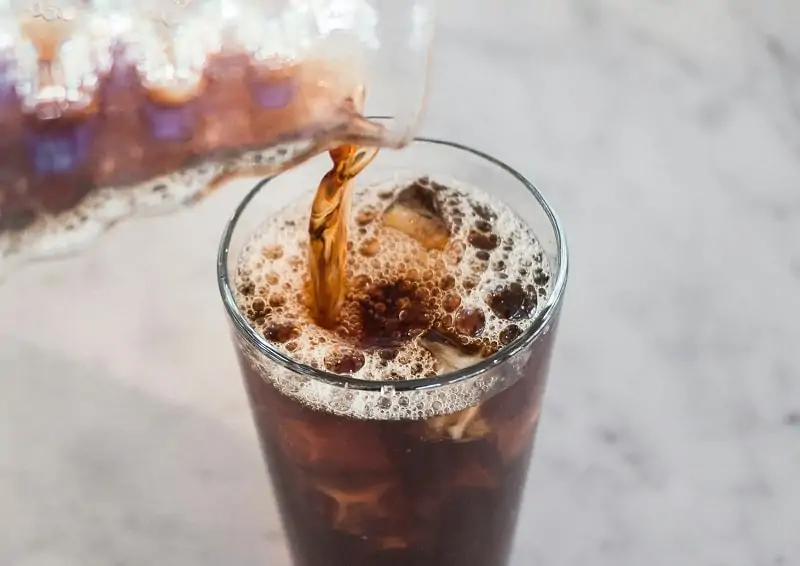
Cold Brew Methodology
Cold brew coffee is renowned for its smooth, mellow flavor that comes from a unique brewing process. Unlike traditional hot brewing methods, cold brew is made by steeping coarsely ground coffee beans in cold water. This method typically spans 12-24 hours, but can extend up to 48 hours for those who prefer an even richer taste.
The key to cold brew lies in the time and temperature of the steeping process. The cold water extracts flavors slowly and gently, resulting in a coffee that is less acidic and bitter. This makes it an ideal choice for those with sensitive stomachs or for coffee enthusiasts looking for a smoother cup.
The extended steeping time not only enhances the coffee’s smoothness but also allows for a fuller-bodied experience.
Once the steeping phase is complete, the coffee concentrate is often diluted with water or milk to suit personal taste preferences. It can also be customized with various additives like cream or flavored syrups. The versatility of cold brew makes it a popular choice for coffee lovers who enjoy experimenting with their beverages.
Hot Brew Technique
Hot brew coffee is the traditional method of making coffee using hot water to extract flavors and aromas from the coffee grounds. The infusion method is one of the most popular techniques for hot brewing, where hot water is poured over coffee grounds, allowing the water to extract oils and essences before passing through a filter. This method is quick, typically taking only a few minutes, and is used in methods such as drip coffee or espresso.
Another technique is immersion, where coffee grounds are completely submerged in hot water for a period before being separated. This method includes French press and Aeropress, which can produce a richer flavor due to the longer contact time between the water and coffee grounds.
The choice between infusion and immersion comes down to personal preference and the desired strength and texture of the coffee.
Here’s a simple breakdown of the steps involved in the hot brew process:
- Grind the coffee to the appropriate coarseness.
- Heat water to the correct temperature (usually between 195 to 205 degrees Fahrenheit).
- Pour water over the coffee grounds or immerse them in water.
- Allow the coffee to brew for the recommended time.
- Separate the brewed coffee from the grounds using a filter.
Time and Temperature Factors
The interplay of time and temperature is crucial in defining the taste and quality of your brew. Cold brew requires a significantly longer brewing time, often ranging from 12 to 24 hours, as it relies on cold or room temperature water. This extended period allows for a gentle extraction of flavors, resulting in a smooth and mellow taste profile.
In contrast, hot brew methods typically involve brewing times of 2 to 5 minutes with water temperatures close to boiling point. This high temperature accelerates the extraction process, leading to a more robust and aromatic cup of coffee. However, it’s important to avoid the “danger zone” for microbial growth, which lies between 5°C and 60°C (40°F and 140°F), especially when brewing cold.
Maintaining proper hygiene and sanitization practices is essential to prevent contamination during the brewing process. Inadequate cleaning can introduce harmful microorganisms, particularly in cold brew setups where the brewing and storage times are extended.
Technological advancements in cold brew systems are now helping to mitigate these risks, with some methods capable of producing cold brew in under an hour. Always ensure compliance with food safety regulations to enjoy a safe and delightful coffee experience.
Taste and Flavor Profiles
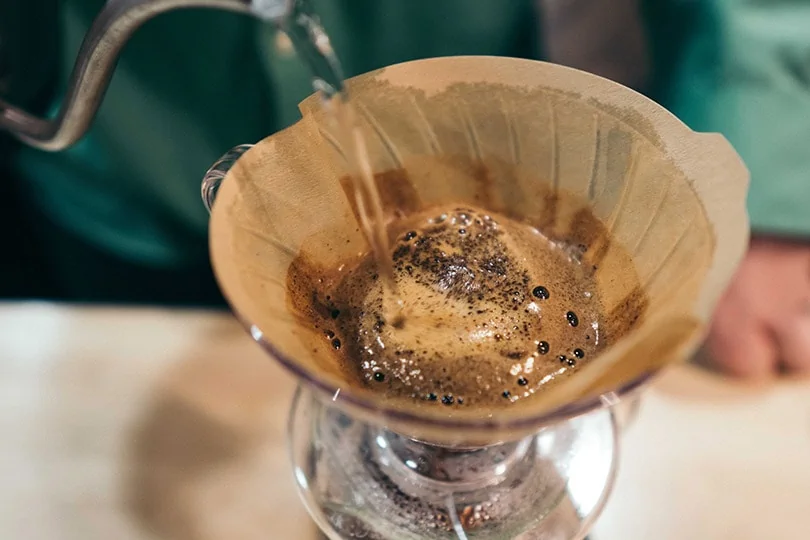
Acidity and Bitterness
When comparing cold brew to hot brew, one of the most notable differences lies in their acidity and bitterness. Cold brew is renowned for its smoothness and mild flavor, primarily due to its lower acidity levels. This is a result of the cold water extraction process, which doesn’t extract the same amount of acidic compounds as hot water does. Consequently, cold brew is often considered more stomach-friendly, especially for those sensitive to acidity.
In contrast, hot brew coffee typically exhibits a higher level of bitterness. This is often attributed to the use of dark-roasted and finely ground beans, as well as the high temperature during extraction, which can release more bitter compounds. For enthusiasts who prefer a stronger and more robust flavor, this characteristic of hot brew is appealing.
The choice between cold brew and hot brew may come down to personal preference, particularly in terms of acidity and bitterness. While cold brew offers a gentler, milder taste, hot brew provides a bold and intense experience.
Here’s a quick comparison of the two brewing methods in relation to acidity and bitterness:
- Cold Brew: Lower acidity, less bitter, smoother taste
- Hot Brew: Higher acidity, more bitter, stronger flavor
Aromatic Compounds
The aromatic compounds in coffee are significantly influenced by the brewing method. Cold brew coffee tends to have a smoother, more mellow flavor profile compared to hot brew methods. This is due to the lower temperatures used in cold brewing, which extract fewer of the volatile compounds responsible for bitterness and astringency.
In contrast, hot brew coffee, especially methods like espresso, can highlight the complex aromas and flavors inherent in the coffee beans. The high temperature and pressure used in espresso machines extract a concentrated range of aromatic compounds, leading to a more intense and robust flavor.
- Arabica beans are often preferred for cold brew for their sweeter, more nuanced taste.
- Robusta beans, with their stronger, more bitter flavor, are typically chosen for espresso.
The choice of coffee bean variety, as well as the roast level, plays a crucial role in the development of these aromatic compounds. Lighter roasts tend to preserve more of the coffee’s natural flavors, while darker roasts can introduce smoky or burnt notes.
Texture and Body
The texture and body of a coffee brew are largely influenced by the choice of beans and the brewing method. Cold brew typically offers a smoother, more velvety texture compared to hot brew, which can exhibit a wider range of mouthfeel from light and crisp to rich and full-bodied, depending on the roast and preparation.
- Medium to dark roasts lend a fuller body, with single-origin or blends providing distinct profiles.
- The brewing process is crucial: use coarse grounds and a 1:8 coffee-to-water ratio.
- Strain carefully after steeping for 12-24 hours.
- Customize your concentrate with various dilutions and flavor additions for a personalized touch.
The choice of roast is significant, with dark roasts often favored for their consistent flavor and compatibility with additives like milk or sweeteners. For those seeking the bean’s original flavor nuances, a medium roast may be more suitable.
Proper hygiene practices are also essential in ensuring the quality and safety of the brew, especially for cold brews that require prolonged steeping times.
Health and Digestibility Considerations
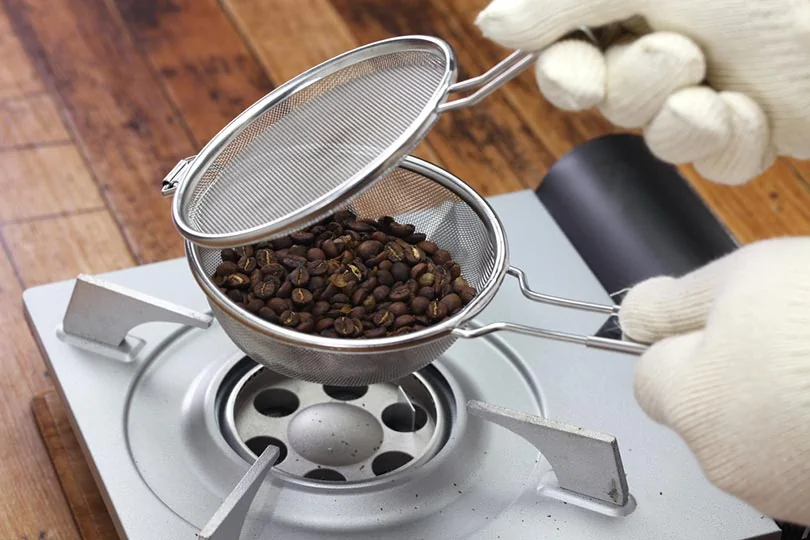
Acid Levels and Stomach Comfort
For individuals with sensitive stomachs or digestive issues, the choice between cold brew and hot brew coffee can significantly impact comfort levels. Cold brew coffee is renowned for its lower acidity, which is achieved through its unique brewing process that utilizes cold or room-temperature water. This method not only reduces the acid content but also results in a smoother and milder beverage, less likely to cause stomach discomfort when consumed in moderation.
The gentle nature of cold brew coffee makes it a preferable option for those with acid sensitivity or conditions like GERD (gastroesophageal reflux disease).
While hot brew coffee tends to have higher acidity, which can exacerbate stomach discomfort, cold brew offers a more stomach-friendly alternative. The addition of ice, milk, or water to cold brew can further dilute the acidity, making it an even milder choice. It’s important to note, however, that while cold brew’s mild acidity can be easier on the digestive system, it does not eliminate caffeine content, which may still pose concerns for certain individuals, such as pregnant women.
Caffeine Content and Effects
When it comes to caffeine, there’s a common misconception that cold brew is milder than hot coffee. However, the reality is that cold brew can contain more caffeine due to its extended steeping time and the use of coarse grounds. This slow extraction process not only increases potency per ounce but also allows for a customizable caffeine experience.
The caffeine content in cold brew is influenced by the coffee-to-water ratio. More coffee beans result in a higher caffeine level, while diluting the concentrate with water or milk can lessen the effect.
For those who are caffeine-sensitive or looking to manage their intake, cold brew offers an advantage. Its caffeine content can be easily adjusted to suit individual preferences, making it a versatile choice for both the caffeine aficionado and those who prefer a gentler lift.
Antioxidant Properties
When it comes to the health benefits of coffee, antioxidants play a crucial role. These compounds are known for their ability to combat oxidative stress and may contribute to the prevention of various diseases. Hot brew coffee has been shown to extract more antioxidants compared to cold brew, particularly as the degree of roasting increases.
Antioxidants are not only beneficial for their disease-fighting potential but also for their contribution to overall wellness. The method of brewing can significantly impact the antioxidant levels in your cup of coffee.
While both brewing methods offer antioxidants, the difference in extraction processes means that you might be getting more of these beneficial compounds in a hot brew. This is especially true for coffee that has been roasted longer, as the heat aids in releasing more antioxidants from the coffee grounds.
Cold Press vs Cold Brew: Clarifying the Confusion
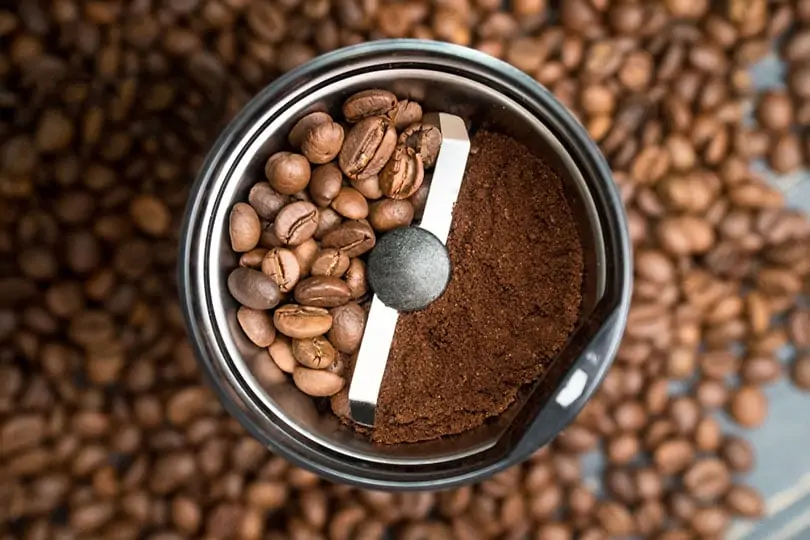
Method of Preparation
The preparation of cold brew coffee is distinct from other brewing methods and involves several key steps. The process begins with grinding the coffee beans to the correct consistency, which is crucial for achieving the desired strength and flavor. The grounds are then steeped in cold or room temperature water, a technique that can be traced back to Switzerland. This steeping process typically lasts between 12 to 24 hours, allowing the coffee to slowly infuse with the water and release its flavors.
After the steeping period, the next critical step is straining. This separates the coffee grounds from the liquid, resulting in a clear and smooth concentrate. Proper storage of this concentrate is essential to maintain its freshness and flavor. There are various methods to prepare cold brew, from traditional steeping to using machines that expedite the process. However, the temperature of the water remains a pivotal factor throughout.
The key to a great cold brew lies in the details, such as the grind size, coffee-to-water ratio, and the type of grinder used.
Flavor and Strength Customization
One of the main advantages of cold brew is the ability to customize its flavor and strength to individual taste. Unlike hot brew, which is typically enjoyed soon after brewing, cold brew concentrate can be adjusted for strength by altering the dilution ratio with water, milk, or other mixers. This flexibility allows for a personalized coffee experience, whether you prefer a bolder or a milder beverage.
Adjusting the caffeine content is another aspect of customization. The caffeine level in cold brew is influenced by the coffee-to-water ratio during preparation. More coffee beans result in a higher caffeine concentration, while additional dilution can tone it down for those who prefer a gentler effect.
Creative flavor additions can transform your cold brew into a unique drink. Experiment with sweeteners, creamers, spices, or citrus zests to find your perfect match. The cold brew method also opens up possibilities for innovative recipes, including cocktails and desserts.
For those who enjoy experimenting, the choice of coffee beans can significantly impact the final taste. Opting for medium to dark roasts can lend a fuller body, and trying out single-origin beans or blends can introduce different flavor profiles. The key to a great cold brew is in the details: use coarse grounds, aim for a 1:8 coffee-to-water ratio, steep for 12-24 hours, and then customize your concentrate to your liking.
Shelf Life and Popularity
When it comes to shelf life, cold brew coffee offers a significant advantage over its hot-brewed counterpart. The shelf life of refrigerated cold brew is primarily constrained by changes in taste rather than microbial spoilage. This means that cold brew can remain fresh and enjoyable for a longer period, typically up to two weeks when stored properly in the refrigerator.
Popularity-wise, cold brew has seen a remarkable surge in recent years. It has become a beloved choice among coffee enthusiasts and a constant presence on coffee shop menus. The trend is not just a fleeting one; cold brew has established itself as a mainstay in the coffee industry.
The extended shelf life of cold brew, combined with its growing popularity, makes it an appealing option for both coffee shops and home brewers alike.
Making Your Choice: Cold Brew or Hot Brew
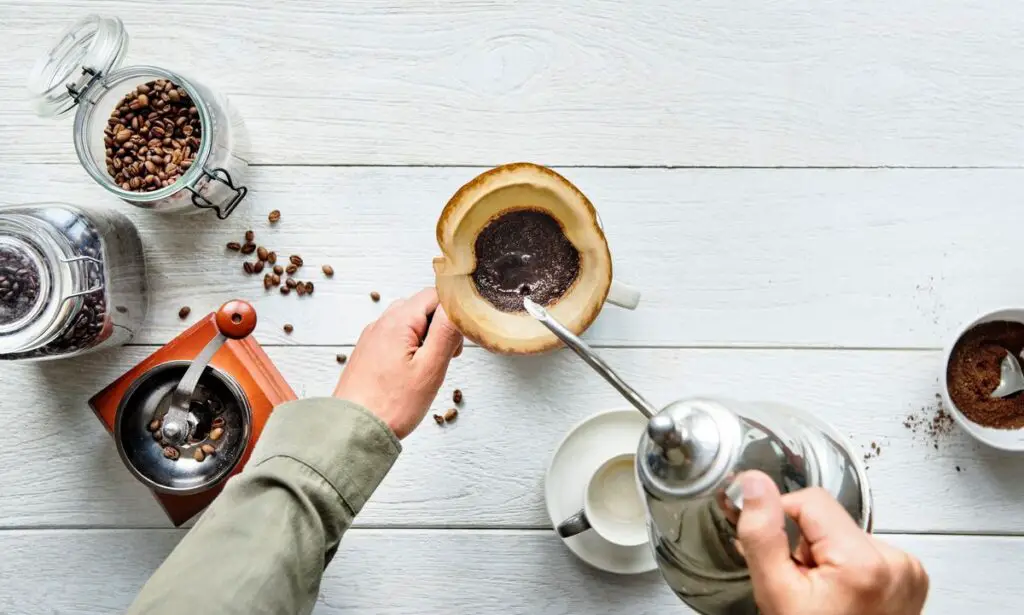
Personal Taste Preferences
When it comes to personal taste preferences, the choice between cold brew and hot brew coffee is highly subjective. Hot coffee lovers often appreciate the bold and rich flavors that are more pronounced when brewed at higher temperatures. In contrast, cold brew enthusiasts are drawn to its smooth, mellow flavor with subtle hints of chocolate and caramel.
The decision is not just about the temperature of the brew but also the nuanced taste profiles each method brings out in the coffee.
Experimenting with different types of beans can also influence your preference. For instance, Colombian beans are known for their balanced flavor and medium acidity, while Ethiopian beans offer fruity and floral notes. Here’s a quick list to consider:
- Colombian beans: Balanced flavor, medium acidity
- Ethiopian beans: Fruity and floral notes
- Brazilian beans: Nutty and chocolatey flavors
- Guatemalan beans: Rich and full-bodied taste
Ultimately, your choice may also depend on how sensitive you are to acidity and bitterness, or whether you prefer a more pronounced aromatic experience. The best way to determine your preference is to try a variety of brews and note which characteristics you enjoy the most.
Convenience and Lifestyle
When it comes to brewing coffee, the convenience factor can be a significant determinant in choosing between cold brew and hot brew. Cold brew coffee offers the advantage of a make-ahead approach, allowing you to prepare a large batch that can last several days in the refrigerator. This is particularly appealing for those with busy lifestyles or for serving multiple people without the need for brewing individual cups.
On the other hand, hot brew coffee is often favored for its immediacy and the ritualistic aspect it can bring to daily routines. The process of grinding beans, boiling water, and pouring over can be a meditative start to the day for many. However, it requires more active time and attention, which might not be ideal for everyone’s schedule.
- Cold Brew:
- Make-ahead convenience
- Larger batches
- Less frequent brewing
- Hot Brew:
- Immediate gratification
- Ritualistic preparation
- More active brewing time
While both methods have their own set of conveniences, it ultimately comes down to personal preference and how coffee fits into your daily life. Whether you prioritize the ease of a cold brew routine or the fresh experience of a hot brew, your choice will align with your individual lifestyle and time constraints.
Seasonal Considerations
When it comes to choosing between cold brew and hot brew, the time of year can play a significant role in your decision. During warmer months, cold brew can offer a refreshing alternative to the traditional hot cup of coffee, providing a cool and invigorating experience. Conversely, in the chill of winter, a hot brew can be a comforting and warming choice, aligning with the desire for something to heat up the body and spirit.
- Spring and Summer: Ideal for cold brew, as it can be more thirst-quenching and energizing.
- Fall and Winter: Perfect for hot brew, offering warmth and a sense of coziness.
While personal preferences are paramount, seasonal changes can subtly influence our coffee choices. The crispness of autumn might beckon for the warmth of a hot brew, just as the balmy breezes of summer often make a chilled cold brew feel just right.
Ultimately, whether you reach for a cold brew or a hot brew may depend on not just the weather outside, but also on indoor environments and social settings. A steaming mug might suit a quiet evening at home, while a cold brew could be the perfect companion for outdoor activities or social gatherings.
Conclusion
In the world of coffee, the choice between cold brew and hot brew is more than a matter of temperature—it’s a decision that affects flavor, acidity, and even health benefits. Cold brew, with its extended steeping time and cold water extraction, offers a smoother, less acidic cup that’s kinder to the stomach and boasts a longer shelf life. Hot brew, on the other hand, is the traditional quick-fix that delivers a more pronounced acidity and a familiar bitterness that many coffee aficionados cherish. Whether you prefer the mellow richness of a cold brew or the immediate warmth and robust profile of a hot brew, both methods have their unique qualities that cater to different palates and occasions. Ultimately, the best choice is the one that aligns with your personal taste and lifestyle preferences.
Frequently Asked Questions
What makes cold brew different from hot brew?
Cold brew is made using cold or room temperature water and is steeped for 12 to 24 hours, resulting in a sweeter, fuller-bodied flavor. Hot brew is made with hot water, has a quicker brewing process, and often retains more acidity and bitterness.
What is the difference between cold brew and iced coffee?
Cold brew is brewed with cold water over an extended period, while iced coffee is brewed hot and then cooled down. Cold brew tends to be smoother with less acidity, whereas iced coffee may have a more pronounced acidity and bitterness.
How do cold press and cold brew differ in preparation?
Cold press uses a coarse grind and extracts flavors without heat, while cold brew involves steeping coffee grounds in cold water for a long time. Both can be customized in flavor and strength.
Which brewing method is less acidic and gentler on the stomach?
Cold brew coffee is less acidic and gentler on the stomach compared to hot brew, making it a preferable choice for those with digestive sensitivities.
Is cold brew healthier than hot coffee?
Cold brew is considered healthier by some due to its lower acidity and gentler effect on the stomach. It also tends to have a lower caffeine content when diluted with ice or other additives.
What factors should I consider when choosing between cold brew and hot brew?
Consider personal taste preferences, convenience, lifestyle, and seasonal considerations. Cold brew is popular in warmer weather and offers a smoother taste, while hot brew is enjoyed year-round and can be prepared more quickly.




